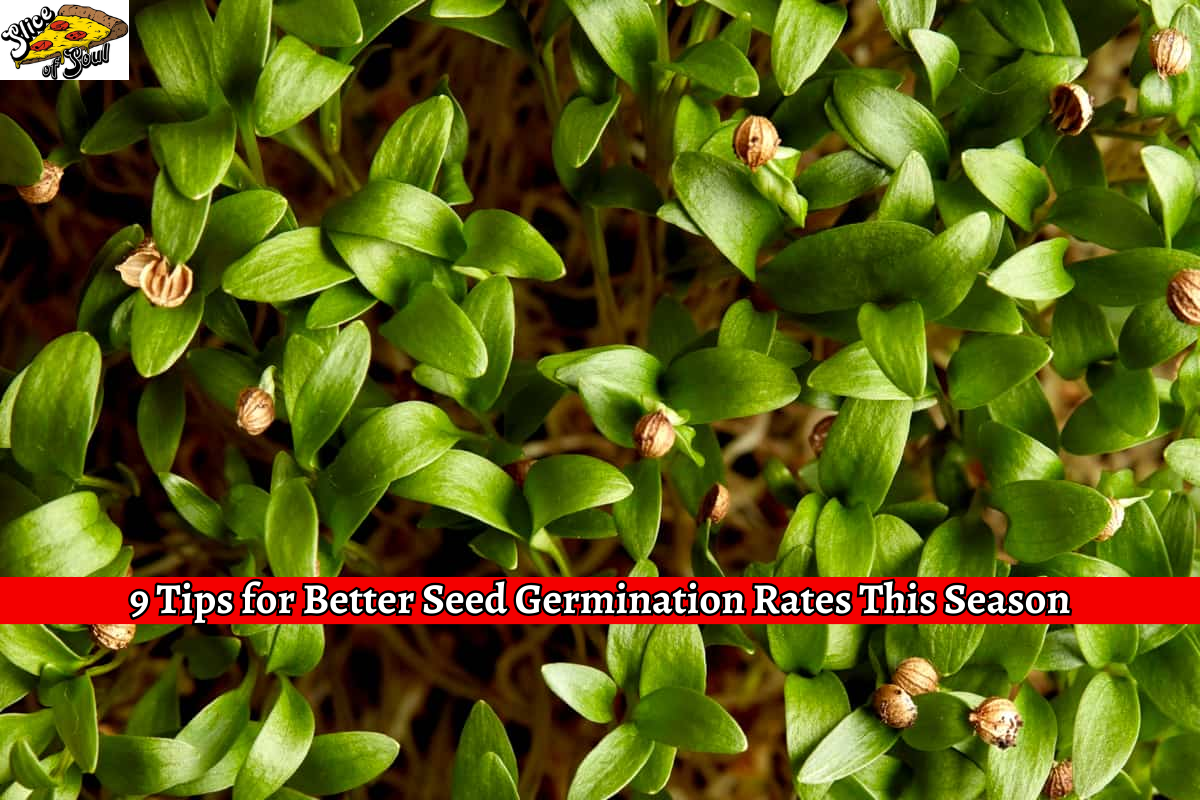9 Tips for Better Seed Germination Rates This Season: Every gardener wants high germination rates, whether indoor, winter, or direct. If you’re tired of planting seeds that never germinate, a few simple fixes could change your seed-starting routine. Planning ahead prevents many gardeners from making simple seed starting mistakes.
9 Tips for Better Seed Germination Rates This Season
1. Avoid Soil Dryness
Seeds die quickly in dry and soggy soil. These extremes of moisture can be disastrous for all seeds, but especially vegetable seeds in seedling trays:
- Low water can stop germination.
- The seeds will shrivel and die.
- Watering too much can rot seeds.
- It can also compact soil, cause hypoxia, and suppress disease.
Seeds can survive the wind and stay in containers all winter. Seeds are as needy as newborns once they germinate. Since they lack a root system to scavenge soil for water, they need constant moisture.
2. Provide Enough Light
Although germination occurs in dark soil, all plants need light once they reach the surface. Without enough sunlight or artificial light, seedlings won’t succeed. Weak, leggy, or spindly baby plants usually result from low light. Consider a mini nursery greenhouse or additional lighting for indoor seed germination. Seed-starting containers can also be placed near a bright south-facing window.
3. Use a Soil Thermometer
The most underrated seed-starting tool is soil thermometer. Soil temperature is more important than air temperature for germination. How many seeds germinate and how fast depends on underground conditions.
Use a good soil thermometer to monitor seedling trays and outdoor garden beds. Due to its insulation, soil naturally buffers extreme temperature fluctuations. This means a sudden weather change won’t change soil temperature as quickly.
4. Use a Heating Mat
If you can’t build a climate-controlled greenhouse, a heating mat is the cheapest and easiest way to boost tomato, pepper, cucumber, and squash germination. Adjusting the temperature of these waterproof electric mats beneath seed-starting trays is simple. Plug it in, place your trays on top, and watch it work!
Also See:
Cranberry Curd Tart Recipe – Learn with Experts
5. Sow at the Proper Depth
Similar to how a baby needs to be swaddled and covered in blankets, seeds need to be tucked in at the right depth to germinate. On one hand, you don’t want to bury your seeds heavily. If planted too deep, seeds may lack energy to reach light. However, bare seeds are exposed to the elements. If you plant shallow, seeds may blow away, dry out, or move during watering.
- Generally, sow seeds twice as deep as their size.
- Large seeds like squash and beans can be planted an inch deep.
- Plant medium seeds like tomatoes or brassicas in a hole twice their size.
- A thin layer of soil should cover tiny lettuce and basil seeds.
6. Don’t Plant Old Seeds
Dormant seeds can last years or decades, but these are rare! Most seeds germinate less as they age. Young vegetable seeds germinate fastest and most evenly. Seed companies list lot numbers and dates on seed packages to indicate age. Verify that seed packets are 1-2 years old before planting. Destroy seeds older than 3-5 years. You should reorder hybrid seeds every year.
7. Sow at the Proper Depth
Drainage keeps seeds from rotting in the soil, ensuring successful germination. Water flows faster through the seedling tray. To help seeds “breathe,” well-drained soil has extra oxygen between particles. Uneven germination may be caused by suffocating seeds in heavy or poorly drained soil.
Look for seed-specific soil mix. These blends have better drainage than potting mix or garden bed mix, making them ideal for container growing. The best well-drained seedling mix ingredients are:
- Sieved compost
- Perlite
- Material: Vermiculite, Coco Coir, Peat Moss
- Vermicompost
8. Use Row Cover for Direct Sown Seeds
Dormant seeds can last years or decades, but these are rare! Most seeds germinate less as they age. Young vegetable seeds germinate fastest and most evenly. Seed companies list lot numbers and dates on seed packages to indicate age. Verify that seed packets are 1-2 years old before planting.
9. Don’t Plant Old Seeds
Direct seeding in the garden makes it harder to maintain conditions during weather changes. Row cover is an agricultural fabric that lets light and water pass through, making seeds more comfortable. Due to its cozy “microclimate” beneath it, this fabric can greatly improve germination. By protecting seeds from wind drying, it maintains moisture.
